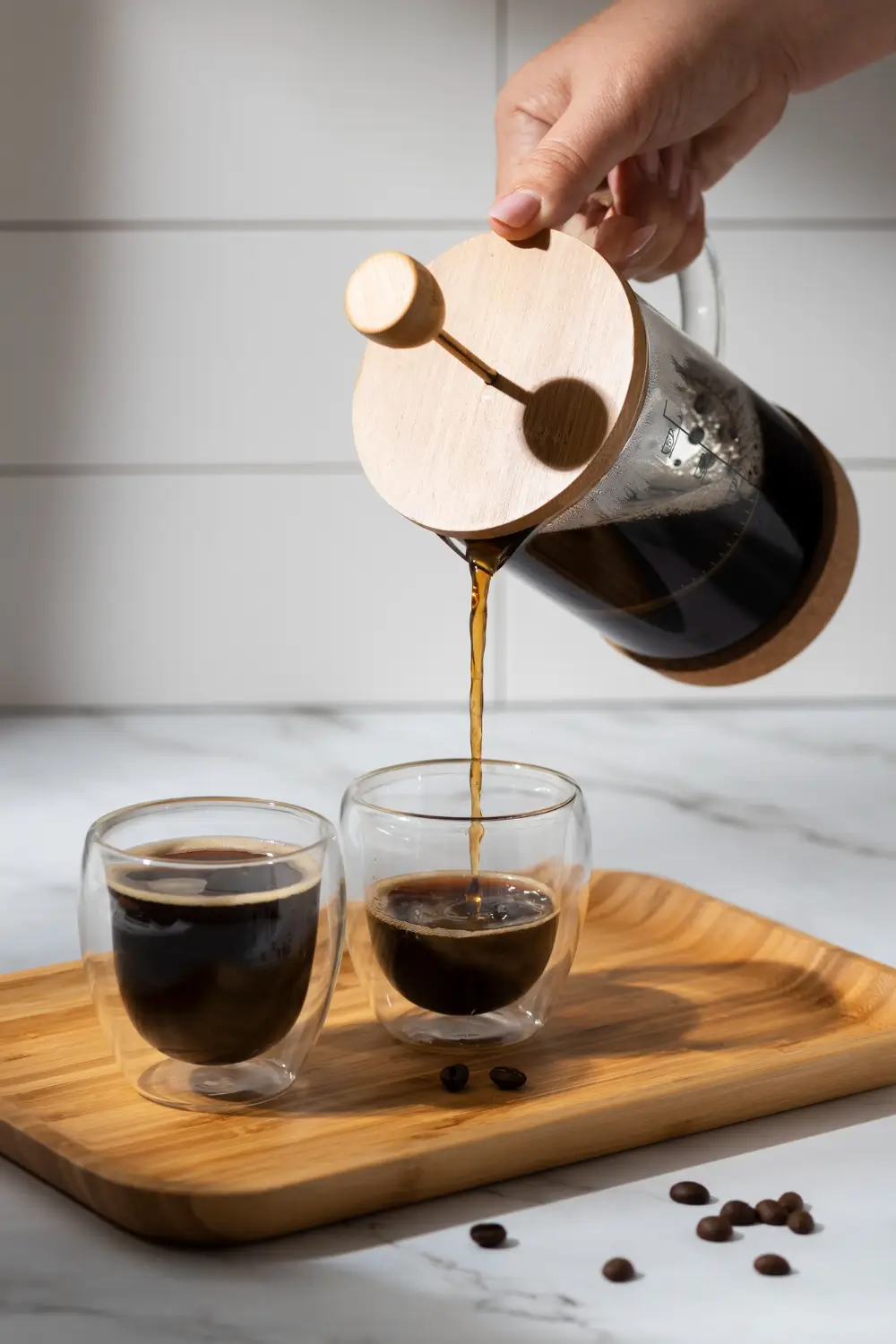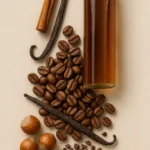You might be wondering, what is decaf coffee, and how does it differ from regular coffee? Decaf gives you a fantastic option if you love coffee’s rich flavor but want to avoid the stimulating effects of caffeine. It goes through a special process to significantly reduce its caffeine content, making it a distinct choice from regular coffee. Let’s break down how it’s made, how much caffeine it really has, what it tastes like, its health perks, and clear up some common myths.
- What exactly is decaf coffee?
- How is decaf coffee made? Exploring the decaffeination process
- How much caffeine is really in decaf coffee?
- Decaf coffee taste: Does it taste different?
- Debunking common decaf coffee myths
- Health benefits and potential downsides of decaf coffee
- What is decaf coffee’s ultimate conclusion?
What exactly is decaf coffee?
What is the core definition of decaf coffee beyond “caffeine-free”?
Think of decaf coffee as regular coffee that’s gone through a special decaffeination process. This process takes out most of its caffeine content. It usually strips away 97% or even more of the caffeine from the green coffee beans before they’re roasted. Just so you know, decaf isn’t completely “caffeine-free,” despite what you might hear. It always holds onto a tiny bit of residual caffeine. An 8-ounce cup of decaf coffee usually has only about 2–7 mg of caffeine. Compare that to 70–140 mg in your regular cup.
What is the key difference between decaf and regular coffee?
The biggest difference between decaf coffee and regular coffee is their caffeine content. Regular coffee’s caffeine gives you that jolt, making you feel more alert and energized. Decaf, though, has most of that stimulant gone, so its effects are much gentler. This is why so many people pick decaf: they want to enjoy their coffee without the jitters or messed-up sleep. You still get that great coffee experience, just without the strong physiological kick.
How is decaf coffee made? Exploring the decaffeination process
What are the fundamental steps of decaffeination for decaf coffee?
You make decaf coffee by removing caffeine from green (unroasted) coffee beans before you roast them. Generally, it involves a few important steps to get the beans ready for caffeine extraction:
- First, processors swell the beans, often using steam or water. This opens their pores and makes the caffeine easier to get to.
- Next, they extract the caffeine using one of several special methods.
- Finally, they carefully dry the decaffeinated beans. This prepares them for roasting and brewing.
What are the primary decaffeination process methods explained for decaf coffee?
The main methods for making decaf coffee all aim to remove caffeine while keeping the bean’s natural flavor. These clever decaffeination processes make sure you get a low-caffeine drink that still tastes great. Each method extracts caffeine differently, which affects the final taste and how the coffee is made up.
What is the Swiss Water Process for decaf coffee?
The Swiss Water Process is a popular chemical-free way to produce decaf coffee. Here’s how it works: they first soak green coffee beans in hot water. This pulls out both the caffeine and the soluble flavor compounds. That water, now full of caffeine and flavor, then goes through special charcoal filters. These filters grab only the caffeine molecules. The caffeine-free, flavor-rich water—what we call Green Coffee Extract (GCE)—then decaffeinates the next batches of fresh beans. This lets the beans keep their original flavors. This natural approach makes the Swiss Water Process a favorite for organic coffee, and it does a fantastic job of keeping the flavor intact.
What is the Direct-Solvent Process for decaf coffee?
The Direct-Solvent Process for decaf coffee involves introducing chemical solvents right to the coffee beans. First, they steam the green coffee beans to open their cell pores, making the caffeine more accessible. Then, they repeatedly soak the steamed beans in a chemical solvent. They usually use methylene chloride or ethyl acetate. This solvent specifically binds to and pulls out the caffeine. Once the caffeine is gone, they thoroughly rinse and dry the beans. This ensures any leftover solvent is minimal, especially after the beans go through high-temperature roasting and brewing.
What is the Indirect-Solvent Process for decaf coffee?
The Indirect-Solvent Process for decaf coffee works differently because the chemical solvent never directly touches the coffee beans. They start by soaking green coffee beans in hot water, which pulls out both the caffeine and other soluble flavor compounds. Then, they drain the caffeine-laden water from the beans and treat it separately with a solvent, like methylene chloride or ethyl acetate. This solvent only removes the caffeine. Finally, they reintroduce the caffeine-free, flavor-rich water to the beans. This allows the beans to reabsorb their original flavor components. This approach usually leads to better flavor retention because the beans themselves never directly touch the solvent.
What is the Carbon Dioxide (CO2) Process for decaf coffee?
The Carbon Dioxide (CO2) Process offers another effective and chemical-free way to make decaf coffee. In this technique, unroasted coffee beans first soak in water. Then, they move the beans into an extraction vessel. There, they introduce supercritical CO2—carbon dioxide under high pressure and temperature, acting as both a liquid and a gas. This supercritical CO2 selectively binds with and extracts the caffeine molecules from the beans. After that, they remove the caffeine-laden CO2. This leaves most of the desirable coffee taste and aroma compounds right there in the beans. People highly praise this method for its effectiveness and its ability to keep the coffee’s complex flavor profile.
| Method | Key Solvent/Mechanism | How It Works | Flavor Impact |
|---|---|---|---|
| Direct-Solvent | Methylene chloride or ethyl acetate | Solvent directly extracts caffeine from steamed beans | Good, slight chemical use |
| Indirect-Solvent | Methylene chloride or ethyl acetate | Beans soaked in water; caffeine extracted from water by solvent | Better flavor retention |
| Swiss Water Process | Water and carbon filtration | Water extracts caffeine; carbon filters caffeine, preserves flavor | High (chemical-free) |
| CO2 Process | Supercritical carbon dioxide | CO2 extracts caffeine selectively under pressure and temperature | High (preserves flavors) |
How much caffeine is really in decaf coffee?
What is the residual caffeine content in decaf coffee?
The residual caffeine content in decaf coffee is pretty low—usually just 2–5 milligrams (mg) in an 8-ounce cup. That’s a huge drop from your average 8-ounce regular cup, which packs about 95 mg. So, decaf has roughly 2–5% of the caffeine you’d find in regular coffee, since decaffeination processes aim to yank out 97–99.9% of that stimulant. Even though it’s usually low, some tests show that certain brands or preparations might have a bit more, sometimes up to 12–32 mg per cup. It really depends on the bean and how well they processed it.
| Coffee Type | Caffeine per 8 oz Cup (mg) | Approximate % of Regular Coffee Caffeine |
|---|---|---|
| Regular Coffee | ~95 mg (range 95–200 mg) | 100% |
| Decaf Coffee (typical) | 2–5 mg | ~2–5% |
| Decaf Coffee (some samples) | Up to 12–32 mg | Up to ~13–34% |
Is decaf coffee completely caffeine-free?
Nope, decaf coffee isn’t completely caffeine-free, even though many people think it is. Every decaffeination method, no matter how good, leaves a tiny bit of caffeine in the beans. This small amount—usually between 2 and 5 milligrams per cup—means you can’t really call it totally free of the stimulant. For most of us, this tiny bit won’t do anything, but if you’re really sensitive to caffeine, keep that in mind.
Decaf coffee taste: Does it taste different?
What is the flavor profile of decaf coffee?
Decaf coffee usually gives you a milder, smoother, and less intense taste and aroma than regular coffee. You’ll often notice subtle hints of roasted nuts and caramel, giving it a mellow, elegant feel. It typically has mild acidity and a clean finish, making it quite gentle. The decaffeination process can change the bean’s chemistry just a little, sometimes making the flavor a bit less vibrant or robust than fully caffeinated brews. But new processing techniques have really improved how well the flavor holds up.
How do decaf and regular coffee flavors compare?
When you compare decaf coffee and regular coffee, you’ll really notice the differences in their smell, taste, and how they feel in your mouth. Regular coffee usually has a bolder, stronger smell, with rich notes like dark chocolate and earthiness. Decaf, on the other hand, often gives you a subtle, warm aroma with hints of roasted nuts and caramel. Regular coffee tastes richer and more complex, with stronger acidity. Decaf gives you a smoother, mellow flavor, mild acidity, and a clean finish. For body, decaf feels lighter—silky and elegant. Regular coffee often feels fuller, heavier, and more robust. Thanks to better decaffeination methods, these differences are often subtle, especially with great beans. This really helps preserve the flavor.
| Aspect | Decaf Coffee | Regular Coffee |
|---|---|---|
| Aroma | Subtle, warm, hints of roasted nuts and caramel | Bold, robust, notes of dark chocolate, earthiness, smokiness |
| Taste | Smooth, mellow, mild acidity, clean finish | Bold, rich, strong acidity, complex flavors including chocolate |
| Body | Lighter, silky, elegant | Fuller, heavier, robust |
| Chemical impact | Slight changes due to caffeine removal | Natural composition with caffeine intact |
Debunking common decaf coffee myths
Is the myth that decaf coffee is 100% caffeine-free true?
That idea that decaf coffee is 100% caffeine-free? That’s just not true. Sure, decaffeination takes out most of the caffeine, but it doesn’t get rid of every single bit. Like we talked about, a typical cup of decaf coffee still has a tiny bit of residual caffeine content—usually 2–5 milligrams per serving. For most of us, this trace amount doesn’t matter, but if you’re really sensitive to caffeine, keep that in mind.
Is the myth that decaf coffee tastes bad or weak true?
That myth about decaf coffee tasting bad or weak is way behind the times. Huge improvements in decaffeination methods have made decaf coffee taste so much better. Today, you can find many high-quality decaf options with amazing flavor, often just as good as regular coffee, especially if you use great beans. Forget the bland, inferior decaf of the past. Now, true coffee lovers can enjoy the taste without the stimulant.
Is the myth that decaf coffee is always processed with harmful chemicals true?
No, that myth about decaf coffee always being processed with harmful chemicals isn’t quite right. Sure, some older methods use chemical solvents like methylene chloride, but many modern decaffeination processes are completely chemical-free. Take the Swiss Water Process or the Carbon Dioxide (CO2) Process—they only use water or CO2 to get rid of caffeine. You can easily choose decaf coffees made with these natural methods, knowing your beans never touch a solvent.
Is the myth that decaf coffee has no health benefits true?
It’s wrong to think decaf coffee has no health benefits. Decaf coffee keeps many of the good antioxidants and other protective compounds you find in regular coffee. This means decaf still offers similar health benefits, like lowering your risk for certain chronic diseases, but without caffeine’s downsides—like anxiety or messing with your sleep. It’s a healthier option if you’re sensitive to caffeine.
Is the myth that decaf coffee causes dehydration true?
That myth about decaf coffee causing dehydration? Not true. Regular coffee’s caffeine can make you pee a bit more, but decaf has so little caffeine it won’t really dehydrate you. Actually, just like any other drink made with water, decaf coffee helps you stay hydrated. Enjoy your decaf—it helps hydrate you, not drain you.
Health benefits and potential downsides of decaf coffee
What are the health benefits of choosing decaf coffee?
Choosing decaf coffee gives you several great health benefits, many just like regular coffee, but without caffeine’s stimulating kick. Decaf coffee is packed with antioxidants, which are super important for protecting your cells from damage. It can even help your heart health by possibly lowering blood pressure and improving circulation. If you’re sensitive to caffeine, decaf aids in anxiety reduction and can lead to better sleep quality, especially if you drink it later in the day. Plus, some studies hint that decaf coffee might lower your risk of type 2 diabetes. Its lower acidity also means it’s gentler on your stomach, which is great if you often have digestive issues.
What are the potential downsides of decaf coffee?
While decaf coffee brings a lot of good things, it also has a few points to consider. Some research suggests that certain types of decaf might slightly raise certain cholesterol levels in sensitive people, mainly because of compounds like cafestol and kahweol. Another thing to think about is that some decaffeination processes use chemical solvents, though today’s methods and strict rules keep any potential risk really low. It’s also true that decaf coffee usually goes through more processing than regular coffee. Some people believe this might slightly reduce some of its original health benefits. Because of this, many experts suggest picking decaf options made with natural, chemical-free processes—like the Swiss Water Process—to avoid these worries.
What is decaf coffee’s ultimate conclusion?
Decaf coffee is a fantastic, low-caffeine alternative for anyone who loves coffee but wants to skip the stimulating effects. We make it using different clever decaffeination methods that carefully take out most of the caffeine, all while trying to keep that original flavor intact. Even though it’s not totally caffeine-free, decaf coffee still has lots of good antioxidants and offers similar health perks as regular coffee—like helping your heart and improving sleep. Its distinct taste and health benefits make it a great option for many people.









